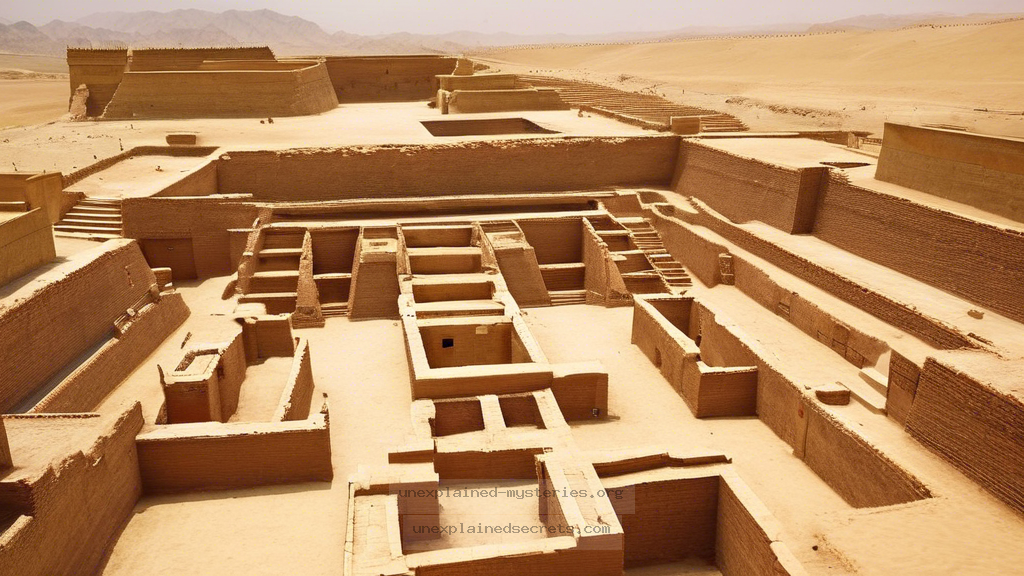What Happened to the Lost Civilization of the Indus Valley?
What Happened to the Lost Civilization of the Indus Valley?
The mystery surrounding the Indus Valley Civilization, one of the world’s earliest urban cultures, raises critical questions about ancient societies, their advancements, and eventual decline. As we delve into this enigmatic civilization, which flourished between 3300 BCE and 1300 BCE in what is now Pakistan and northwest India, we uncover a tapestry of urban planning, sophisticated engineering, and unknown factors that led to its disappearance. Understanding this mystery not only sheds light on our past but also informs our present and future approaches to civilization.
Historical Context of the Indus Valley Civilization
To appreciate the complexity of the Indus Valley Civilization, we must first establish its historical context. This civilization, known for its well-planned cities like Harappa and Mohenjo-Daro, was contemporaneous with ancient Egypt and Mesopotamia. It is estimated that the civilization had a population of over five million at its peak, with advanced urban infrastructures such as sewage systems, public baths, and standardized weights and measures.
Despite its sophistication, the Indus Valley Civilization remains shrouded in mystery due to its undeciphered script, which complicates our understanding of its social structure, economy, and eventual decline. Archaeological discoveries suggest a high level of organization and trade, but much about their daily lives, religious practices, and reasons for their disappearance remains elusive.
Core Concepts: Theories of Decline
Several theories exist regarding the decline of the Indus Valley Civilization, each highlighting different aspects of environmental, social, and economic factors:
- Climate Change: Evidence suggests that significant climate shifts may have altered the region’s monsoon patterns, resulting in droughts that could have devastated agricultural output.
- River Dynamics: The shifting courses of the Indus River and its tributaries could have led to flooding or the desertification of crucial farmland.
- Trade Disruption: The civilization was heavily reliant on trade, and disruptions—perhaps due to conflicts or natural disasters—could have precipitated economic collapse.
- Invasion or Internal Conflict: Some theories suggest that invasions by nomadic tribes or internal social strife could have led to the civilization’s downfall.
Practical Evidence: Archaeological Discoveries
Archaeological excavations have unveiled numerous artifacts, city layouts, and structures that provide insight into the Indus Valley way of life. Items such as seals, pottery, and toys suggest a society that valued trade, art, and possibly religion.
The cities themselves were marvels of urban design. Streets were laid out in grid patterns, and homes were constructed with standardized baked bricks. The Great Bath of Mohenjo-Daro, a massive public water tank, hints at the importance of ritual bathing or sanitation in their culture.
| City | Key Features | Estimated Population |
|---|---|---|
| Harappa | Well-planned streets, granaries, and advanced drainage systems | Over 23,000 |
| Mohenjo-Daro | The Great Bath, multi-story homes, and public infrastructure | Approximately 40,000 |
Alternative Perspectives: New Theories and Research
As research continues, alternative perspectives on the decline of the Indus Valley Civilization are emerging. Some scholars propose that rather than a sudden collapse, the civilization may have experienced a gradual decline, with people migrating to surrounding areas rather than disappearing entirely.
Recent studies utilizing satellite imagery have revealed previously unknown settlements in the region, suggesting that the civilization may have fragmented into smaller communities that adapted to changing conditions. This perspective emphasizes resilience and adaptability rather than outright failure.
Common Misconceptions About the Indus Valley Civilization
Several misconceptions exist regarding the Indus Valley Civilization that can cloud our understanding:
- Many believe it was a monolithic culture; however, archaeological evidence points to significant regional diversity within the civilization.
- Some assume that the civilization was entirely peaceful; however, evidence of weapons and fortifications suggests the existence of conflict.
- It is often thought that the civilization vanished completely, but many scholars now argue for the idea of cultural continuity.
Best Practices for Investigating Lost Civilizations
For those interested in studying lost civilizations like the Indus Valley, several best practices can enhance the research process:
- Multidisciplinary Approach: Engage with various fields such as archaeology, anthropology, climate science, and history to gain a holistic understanding.
- Field Research: Participate in or support archaeological digs to uncover artifacts and structures firsthand.
- Stay Updated: Follow current research and archaeological findings through academic journals and conferences to keep abreast of new discoveries and theories.
Future Developments: Ongoing Research in the Indus Valley
The exploration of the Indus Valley Civilization is far from over. Ongoing research, including advanced technologies like ground-penetrating radar and DNA analysis, promises to unveil further mysteries. Collaborative projects, such as the Indus Valley Project, are delving into the socio-political structures of the civilization and how they interacted with neighboring cultures.
As researchers refine their techniques and expand their geographical focus, we can expect to learn more about the civilization’s complexities, including its economic systems, social hierarchies, and cultural practices. Each discovery adds depth to our understanding of this remarkable civilization.
Conclusion: The Legacy of the Indus Valley Civilization
The Indus Valley Civilization remains one of the most intriguing mysteries of our ancient past. Despite its disappearance, the civilization’s legacy endures, influencing modern urban planning, trade practices, and cultural exchanges in South Asia. As researchers continue to investigate this ancient society, we are reminded of the complexities of human civilization and the enduring quest for knowledge.
Understanding what happened to the Indus Valley Civilization not only enriches our appreciation of history but also highlights the interconnectedness of human societies across time. This exploration encourages ongoing curiosity and investigation into the myriad cultures that have shaped our world.
Other Articles
Recent Posts
- What Happened to Flight MH370? The Conspiracy Theories That Still Haunt Us
- What Secrets Lurk Within the Walls of the Infamous Trans-Allegheny Lunatic Asylum?
- What Evidence Supports the Existence of Bigfoot in the Pacific Northwest?
- What Happened to the Indus Valley Civilization? Unraveling the Mysteries of Ancient Urban Life
- Can Telepathy Be Scientifically Proven Through Laboratory Evidence?







